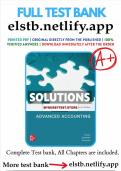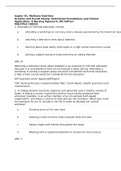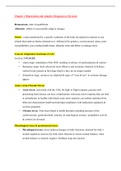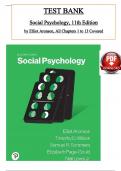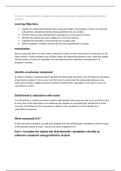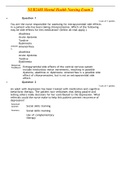Exam (elaborations)
SOLUTIONS MANUAL for Advanced Accounting, 15th Edition by Joe Ben Hoyle, Thomas Schaefer & Timothy Doupnik ISBN13: 9781264798483 ( Chapters1-19)Complete solution.
SOLUTIONS MANUAL for Advanced Accounting, 15th Edition by Joe Ben Hoyle, Thomas Schaefer & Timothy Doupnik ISBN13: 9781264798483 ( Chapters1-19)Complete solution.SOLUTIONS MANUAL for Advanced Accounting, 15th Edition by Joe Ben Hoyle, Thomas Schaefer & Timothy Doupnik ISBN13: 9781264798483 ( Chapt...
[Show more]
